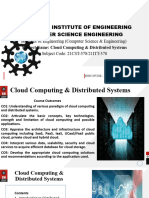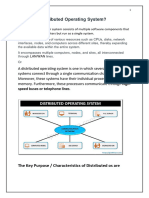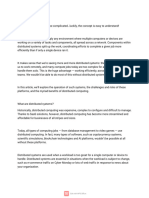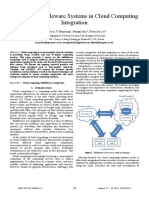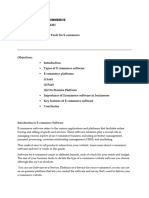0% found this document useful (0 votes)
10 views7 pagesDistributed Systems in Cloud
Distributed systems in cloud computing enhance scalability, reliability, and resource management across multiple servers. Key features include decentralization, fault tolerance, and resource sharing, with applications in cloud storage, databases, and microservices. Challenges such as network latency, data consistency, and security risks must be addressed, while future trends like edge computing and AI integration are shaping the landscape.
Uploaded by
Kiran Kumar MCopyright
© © All Rights Reserved
We take content rights seriously. If you suspect this is your content, claim it here.
Available Formats
Download as PDF, TXT or read online on Scribd
0% found this document useful (0 votes)
10 views7 pagesDistributed Systems in Cloud
Distributed systems in cloud computing enhance scalability, reliability, and resource management across multiple servers. Key features include decentralization, fault tolerance, and resource sharing, with applications in cloud storage, databases, and microservices. Challenges such as network latency, data consistency, and security risks must be addressed, while future trends like edge computing and AI integration are shaping the landscape.
Uploaded by
Kiran Kumar MCopyright
© © All Rights Reserved
We take content rights seriously. If you suspect this is your content, claim it here.
Available Formats
Download as PDF, TXT or read online on Scribd
/ 7



